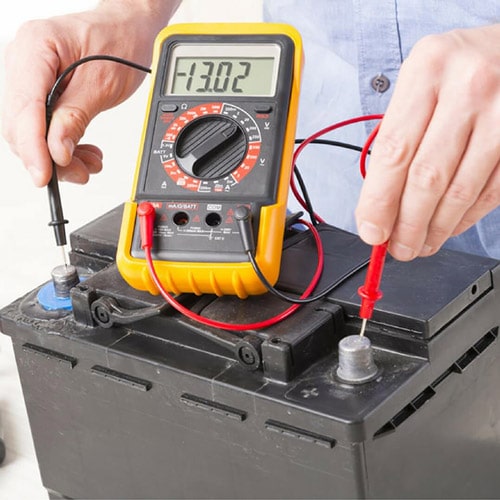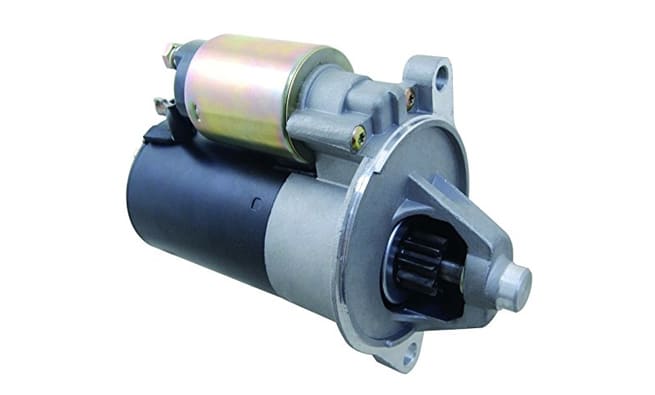How to Start a Car With a Bad Starter? [7 Warning Signs]
It can be extremely frustrating when your car does not start. You’re going to be late for all kinds of things. Why does my car wont start? Is it the starter or a host of other potential problems? Some are serious, and others quite easy to fix.
The first step is to figure out the auto problem and make sure that it is the starter and not a loose connection at the battery terminal, as well as other potential issues.
Try to jump start your car with jumper cables to get your auto started again. This article will give you some tips on how to start a car with a bad starter.
Key Things On Starting an Auto With a Bad Starter
The following are a few of the areas to check before calling the tow truck to tow your disabled car. Some are straightforward, while others require some knowledge and a few tools to check the starting system.
Tap on the starter with a hammer
Tapping on the starter with a solid hammer or pry bar sometimes works, if the starter has a dead spot in the armature. You might need a pry bar to tap with if the starter is challenging to reach.
Light taps are all that is generally needed. This should be considered a temporary solution. If tapping the starter does not work, your starter may need to be replaced.
Check the starter solenoid wiring
If you can access the starter, check the starter solenoid wiring. Look for loose connections or corroded connections and wiring. The starter can be challenging to reach in some cars, making it a challenge to inspect the wiring. Clean and tighten any suspect connections.
Check the battery
 One of the first things to check if your starter is not operating is to check the battery. Make sure the terminals are tight. You should not be able to grab the cables and move them in a circular motion on each terminal. Remove any corrosion around the terminals and retighten.
One of the first things to check if your starter is not operating is to check the battery. Make sure the terminals are tight. You should not be able to grab the cables and move them in a circular motion on each terminal. Remove any corrosion around the terminals and retighten.
Turn on your headlights. Are they their average brightness? If yes, the battery is probably good, and the connections are also good. Try to charge the battery before replacing it.
Bypass the starter relay
This step is not for everyone. You can check the solenoid by connecting 12V current from the battery to the connection on the solenoid. If you hear a clicking sound, the solenoid is working correctly.
Clean the corrosion with caustic soda
Many people use an old rag to clean corrosion from the various connections. Always dispose of the rag when you are finished. Caustic soda can also be used to remove corrosion.
Consider wearing rubber gloves to protect your hands from the caustic soda while cleaning the terminals. Never short out the positive terminal with the negative terminal. This can cause catastrophic results for you and your battery.
Check the connections to the starter
Verify that all connections from the battery to the starter are tight and not corroded. If any battery cable is loose, retighten them. Always clean the connections so that there is a reliable connection for the current to flow. Again be careful to avoid shorting any of these connections to avoid damage to yourself and various components of the car.
Push manual cars to start it
Autos with manual transmissions can sometimes be started in this manner. Turn the key to the on position, place the car in first gear, depress the clutch, and have someone push the car.
When it is moving at least 5 miles per hour, release the clutch, and the engine should start. Avoid letting the car stall once it is started, and have whatever needs repairing fixed. Do not try this with automatic transmissions or automatic cars.
Check the engines ground
Confirm that engine and starter ground wires are tight and not corroded. The starter gets its ground through the frame of the car via the transmission. Similarly, with the engine.
If either of these ground wires are making a poor connection, you could have trouble starting your engine. Try jump starting your auto after cleaning the corroded terminals; if the car refuses to start, then you might have a bad car starter.
Battery terminals
Battery terminals sometimes become corroded, and the cables attached to the terminals can become loose. Clean the terminals and retighten the cables. Be extremely careful to avoid shorting out the battery.
Only touch one cable at a time and never lay tools across the top of the dead battery. Car batteries that have corroded terminals need to be cleaned, especially if the car wont start.
7 Warnings or Bad Starter Symptoms
 Many signs could indicate that your starter motor is beginning to show signs of wear. Have a mechanic inspect your starter before it leaves you stranded somewhere, unable to start your vehicle, even by using jumper cables connected to another automobile. It is much easier to deal with car repair costs when your auto is not disabled at the side of the road.
Many signs could indicate that your starter motor is beginning to show signs of wear. Have a mechanic inspect your starter before it leaves you stranded somewhere, unable to start your vehicle, even by using jumper cables connected to another automobile. It is much easier to deal with car repair costs when your auto is not disabled at the side of the road.
#1 Oil has soaked the starter
The starter is typically located near the bottom of the engine. Occasionally your engine may develop an oil leak that can drip onto the starter. The oil can degrade the starter, causing it not to work correctly. Have the oil leak repaired, and the starter cleaned or replaced.
#2 Whirring sound
The whirring sound indicates that the starter is not engaging with the flywheel to turn the engine. The starter sprocket has become corroded and can not engage properly. You may need a new starter. Either way, it should be removed and inspected.
#3 Burning smell
Over cranking the engine when the auto isnt starting can cause the starter and cables connecting power to the starter to heat up. Allow the starter to cool down, and then try to start the engine again. Inspect the terminals and cables for burned or frayed insulation. There may be other reasons the engine does turn over but not start. Investigate these before attempting to start the engine again.
#4 Clicking sound
When you hear a clicking sound and the engine is not turning, the starter is receiving insufficient current to run it. Check all connections to the starter, including grounds to ensure that sufficient electrical power is being transmitted to the starter. Also, confirm the battery is fully charged.
#5 Cranks the engine but vehicle wouldn’t start
When the engine cranks and does not start, the problem is not with your starter. Lack of fuel, bad sparkplugs, bad coils, or faulty sparkplug wires are just a few of the possibilities that can cause difficulty with engine starts.
#6 Dimming interior lights
If the interior lights are on when you are attempting to start the auto, and they dim, it could mean that the battery is not providing sufficient power to the starter as well as other systems in your auto. Have the battery checked to ensure it is still properly holding a charge?
#7 Grinding noise in cars
The starter motor is turning; however, the sprocket that is supposed to engage with the flywheel is not aligned correctly or is corroded. Check that the starter is not loose and tighten any bolts that hold it to the transmission. You may need a new starter.
How does a starter work?
When you turn the ignition key or use push start in many new cars, an electric solenoid is operated, sending an electric current to the starter. The starter is an electric motor used to crank the engine.
At the same time, the auto’s computer system is engaged and sets all of the parameters for the spark plugs to fire, gasoline to enter the combustion chamber, and the fuel pump to operate.
Many components can affect whether your auto starts or whether it is the starter motor causing the problem. The starter system can be complicated on many newer autos regardless of whether they are gas or diesel engines.
What happens to an auto when the starter stops working?
If the auto starter is not working, you may hear a clicking sound or nothing at all. The engine does not crank and cannot start. If your engine is cranking and not starting, there is some other problem with your engine, which should be investigated.
What causes a starter to go bad?
Auto starters can go bad for many reasons. As they become older, mechanical wear and tear can cause it to stop working. Power cables can become frayed or loose, making poor connections — hard cranking or continuous cranking when the engine does not start, causing the starter to overheat.
Wiring inside the starter can burn or short circuit. Always cycle your starter when an engine does not start. Give it time to cool off before trying to restart your engine. Have it checked if symptoms suggest your starter is going bad before it leaves you stranded?
Conclusion
You can use a auto nearby and jumping cables to start your vehicle if your battery is dead. Car batteries are the most common problem when the car wont start. Try replacing the battery and check the wires that go from the battery to the starter.
By any chance, if you tried to start your car with a jump start device and had no success, then it might be a starter issue. A faulty alternator can also be the cause of why your car wont start. If you have a charged battery and the car starts, try removing the negative battery cable while your car is running.
Most of the time, when the battery alternator is faulty, the engine will die. That is why it is crucial to make sure that your battery and PCV valve function properly. If you think that the battery and starter are the problem, but you can’t figure out how to start the car, take it to a local shop for quick car maintenance.
Also, if your starter is faulty and you don’t know how to start a car with a bad starter, then you should work with a professional mechanic. We suggest reading our post on the best tire chains for winter tires for important safety and maintenance tips.
Last Updated on: October 6, 2022

